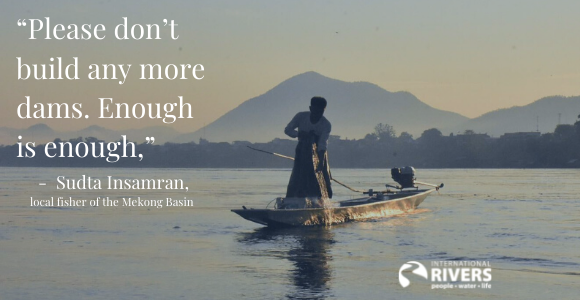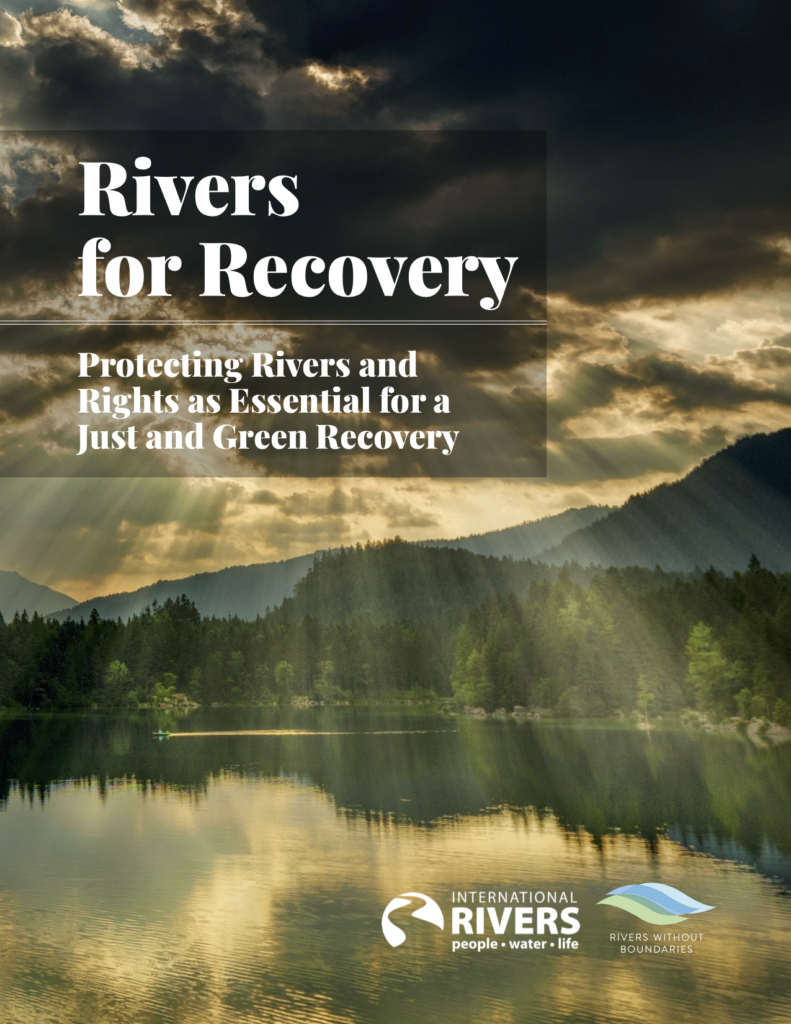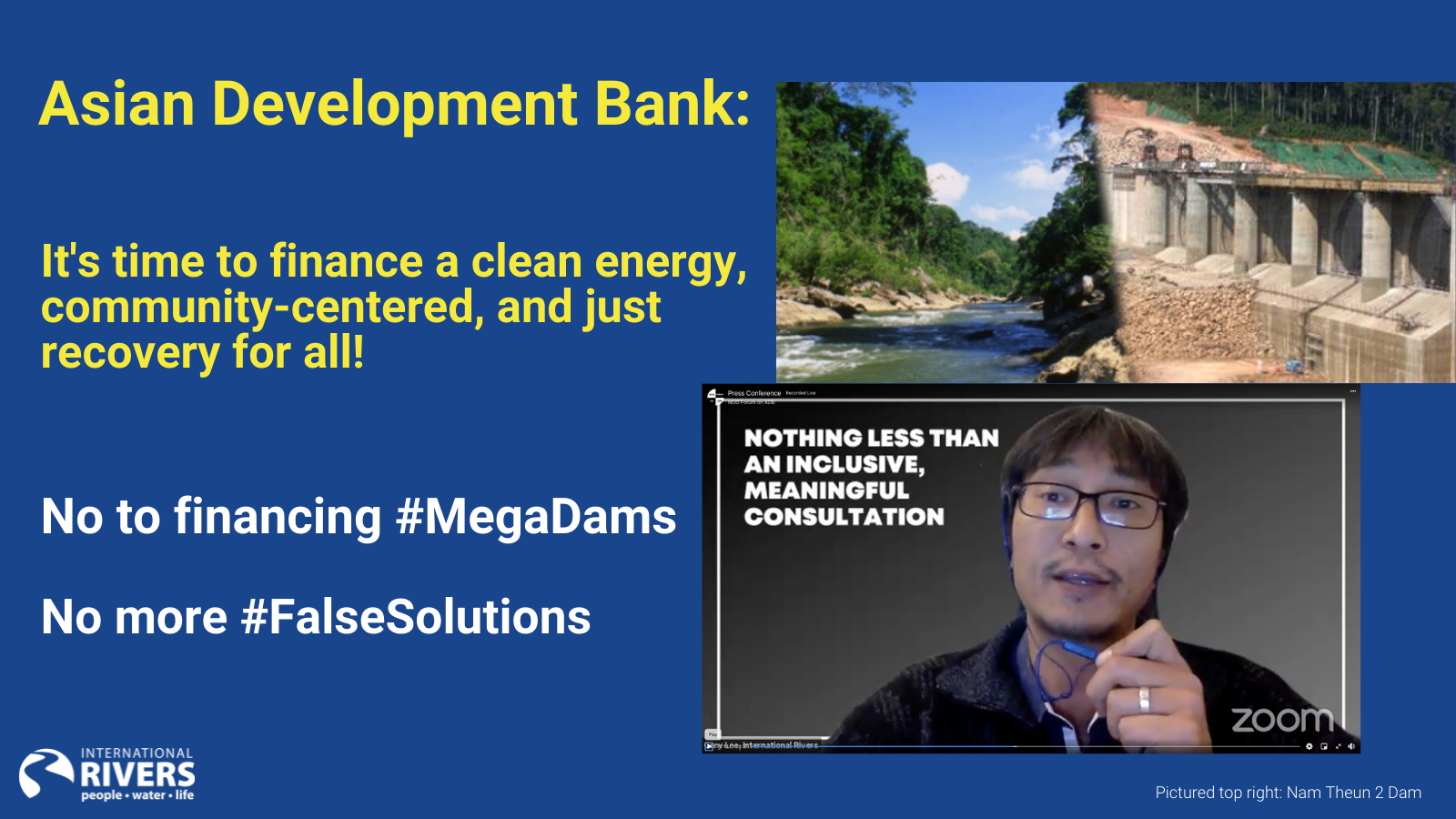Yesterday, International Rivers’ Southeast Asia Program Director Gary Lee joined partners at the NGO Forum on ADB press conference.
The science and historical evidence is clear–if we want to tackle the climate and biodiversity crisis, increase resiliency and food security, and protect the rights of people, the Asian Development Bank’s (ADB) energy policy must prohibit financing new hydropower projects.
Large-scale hydropower is incompatible with ADB Strategy 2030 vision and operational priorities, which is meant to guide the energy policy.
Large-scale hydropower exacerbates inequality within and between countries
Those that benefit are financiers and developers of hydropower; while the impacts are borne by the riparian communities who are displaced from their homes, and denied access to lands, forests, and rivers critical for their lives and livelihoods.
Additionally, those who are disproportionately impacted from hydropower projects, namely women, indigenous people, and the poor, have routinely been excluded from decision-making processes. For example, the Nam Ngiep 1 dam, an ADB financed project, jeopardized the livelihoods and undermined the economic independence of tens of thousands of women located downstream. Over 3,000 people were displaced in addition to the negative impacts to downstream communities. This dam also didn’t serve a need–it was surplus energy and is not needed in Thailand. The benefits once again go to developers and financiers, not the local communities.
Large-scale hydro is not clean or sustainable and reduces resilience to climate change
Large dam reservoirs are a major source of methane emissions, one of the worst greenhouse gases: 30 times more potent than CO2. Some dams have been found to be worse for the climate than coal plants.
Large-scale hydro is a risky investment
In Cambodia in 2019, we saw rolling power cuts, including in the capital, due to over resilience on hydropower and the extended drought. In 2018, we saw major flooding in parts of the Mekong basin exacerbated by large hydropower dams worried about their dams breaking, releasing sudden amounts of water that had major impacts on people living downstream.
Large-scale hydro has severely undermined food security and local economies

The Mekong River basin is the largest inland fisheries in the world, where fish make up 80% of the animal protein needs of people. Nam Theun 2 Dam, another dam ABD was involved in financing, changed the water quality, impacted riverbank gardens, caused dramatic reductions in fish catch, which had previously been the cornerstone of local livelihoods affecting the 100,000 living along the Xe Bang Fai River.
It’s long past time, ADB should get out of the business of financing large-scale hydropower.
If ADB is genuine about achieving “a prosperous, inclusive, resilient, and sustainable Asia and the Pacific, while sustaining its efforts to eradicate extreme poverty, it must exclude support for new large-scale hydro in its energy policy.
There are better energy options which protect rivers and respect the rights of communities.
Our report, Rivers for Recovery is a global call to protect rivers and rights as essential for a just and green recovery
A new paradigm in river stewardship is critical, not only to safeguard the water sources that are indispensable to life and public health, but to help prevent countries bankrupted by COVID-19 from taking on calamitous new debt, speed a just energy transition, and effectively confront the climate crisis.

Financiers and decision-making need to do right by our rivers—our life support—by advancing a truly just, green recovery that:
- Puts a moratorium on new hydropower dams
- Upscales investment in non-hydropower renewables and storage
- Upgrades efficiency of existing hydropower in lieu of building new dams
- Initiates new energy plans that prioritize distributed and smaller-scale energy solutions
- Safeguards protected areas, free-flowing rivers and Indigenous territories
Learn more here: rivers4recovery.org

